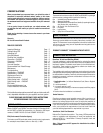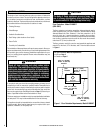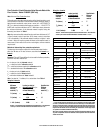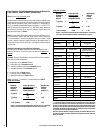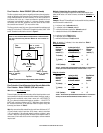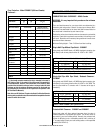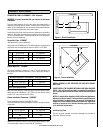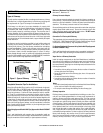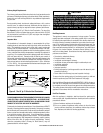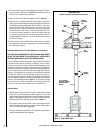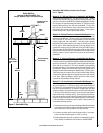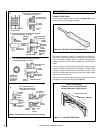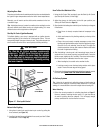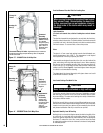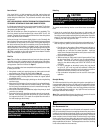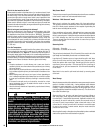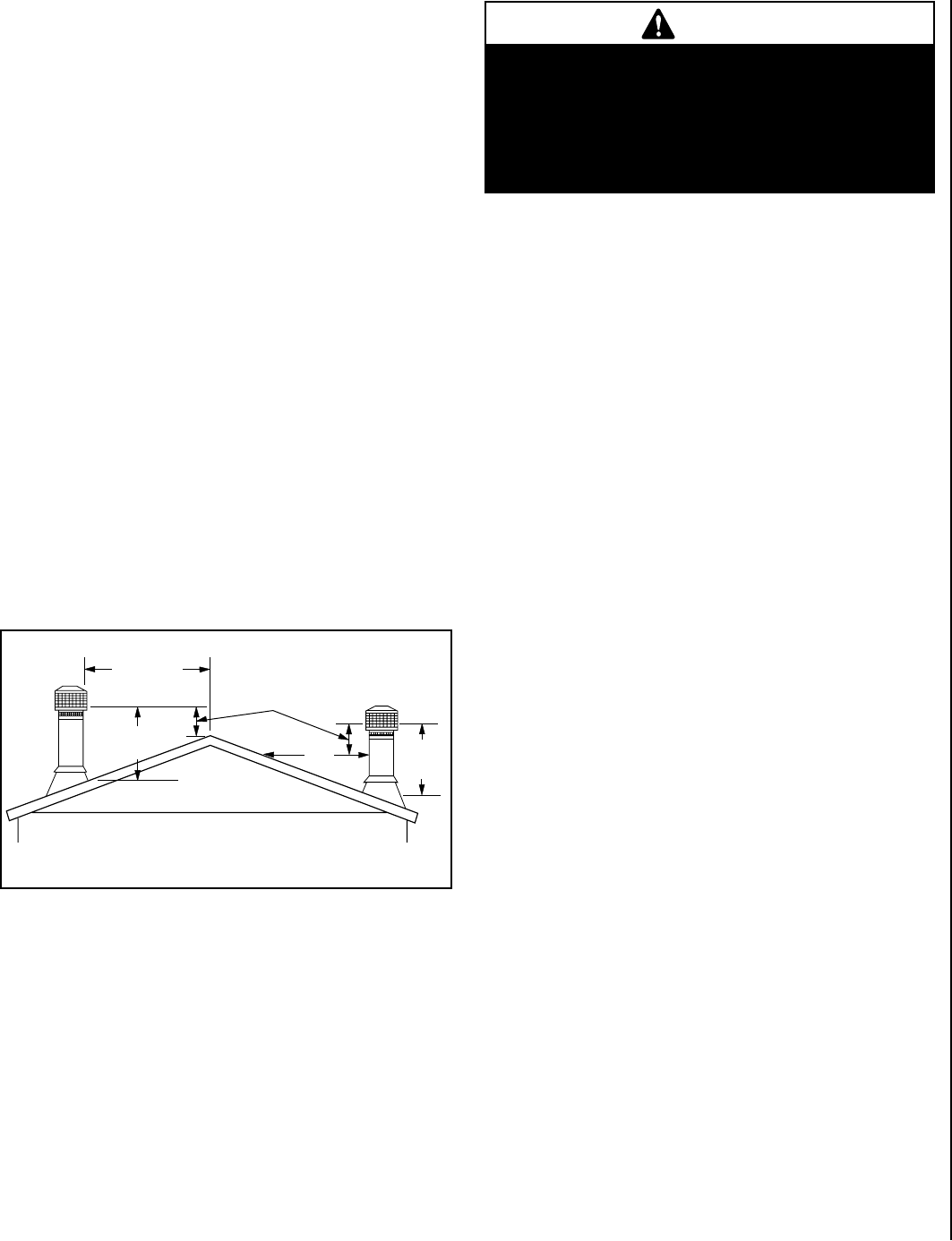
11
NOTE: DIAGRAMS & ILLUSTRATIONS ARE NOT TO SCALE
Chimney Height Requirements
The chimney must extend 3 feet above the level of roof penetration and a
minimum of 2 feet higher than any roof surface within 10 feet (see below).
Check with your local building officials for any additional requirements
for your area.
Due to prevailing winds, local terrain, adjacent tall trees, a hill, or ravine
near the home, or adjacent structures, additional chimney height or a
special chimney cap may be required to ensure optimum performance.
See Figure 6 for the 10’ by 2’ Rule for Vent Termination. The top of the
flue must be 2’ (610 mm) higher than any part of the roof within 10’ (305
cm) horizontal and a minimum of 3’ (915 mm) higher than the highest
point of roof penetration.
Important Note:
The installation of a barometric damper is recommended for all free-
standing stoves in areas that may have high winds, which can effect the
draft. The installation must be only in units with a newly constructed
chimney, free of creosote deposits. The barometric damper is an auto-
matic device designed to regulate the draft in a heating appliance, which
in turn, stabilizes the chimney temperatures, lessening the potential of
over-firing. Do not place the barometric damper greater than 24 inches
(610 mm) above the unit. Excessive draft will lead to poor control of
the burning rate and possible over-firing of the stove and damage to the
cast iron firebox. Most barometric dampers are calibrated in inches of
water column and can be set to draft requirements of -.03 to -.08 inches
(-7.5 to -20 Pa). It is recommended that the barometric dampers to be
set between -.05 and -.06 inches.
Figure 6 - The 10’ by 2’ Rule for Vent Termination
Less than
10' (3 m)
10'
(3 m)
3' (914 mm)
Min.
2’ (610 mm) Min.
(914 mm)
Min.
3'
THE RECOMMENDED DRAFT REQUIREMENTS FOR THESE APPLIANCES
IS NO LESS THAN -.05 AND NO GREATER THAN -.06. OPERATION OF
YOUR STOVE WITH A DRAFT GREATER THAN -.06 CAN POSSIBLY CAUSE
DAMAGE TO THE STOVE AND VOID THE WARRANTY.
Fire intensity is a function of several factors. One of these factors is DRAFT.
Normally, increasing draft increases fire intensity. Conversely, increasing
the fire intensity will increase draft. Draft can also be affected by external
factors such as wind strength and direction, outside temperature, airflow
in or out of the structure, and so forth. If one of these factors changes,
the draft of a low-burning appliance may increase. This increased draft
may cause dangerously high temperature to develop, possibly causing
failure of the unit or flue, or ignition of nearby combustibles. Closing
down the combustion airflow (“Primary Air Draft Control”) may not
guarantee that this will not happen.
CAUTION
Many structure fires have resulted when a slow burning
fire has been left unattended for any extended period
of time. These fires normally occur because combus-
tible materials close to an appliance become heated
to the ignition point by an overfired appliance which
the operator thought was safety “throttled down.”
Draft Requirements
The appliance is merely one component of a larger system. The other
equally important component is the venting system which is necessary
for achieving the required flow of combustion air to the fire chamber and
for safely removing unwanted combustion by-products from the appli-
ance. If the venting system’s design does not promote these ends, the
system may not function properly. Poorly functioning venting systems
may create performance problems (i.e. smoking stove, poor heat output,
fire goes out, window blackens, increased creosote buildup, etc.) as
well as be a safety hazard. Some factors that may lead to performance
problems are as follows:
• Oversized or undersized chimney.
• Excessive offsets in venting.
• Insufficient vertical height of chimney.
• Insufficient chimney termination height in relationship to roof.
• Insufficient ventilation.
• Lack of maintenance.
• Improper operation.
• Burning improper fuel (unit is approved for use with natural dry well-
seasoned wood only).
• Down drafts in the chimney (may need a special wind cap).
To ensure that the venting system is functioning properly a draft test
should be performed (see Draft Test Procedure on this page).
American National Standards Institute ANSI/NFPA 211-96: A chimney or
vent shall be so designed and constructed to develop a flow sufficient
to completely remove all flue and vent gases to the outside atmosphere.
The venting system shall satisfy the draft requirements of the connected
appliance in accordance with the manufacturer instructions.
Draft Test Procedure
After this appliance is installed a draft test should be performed to
ensure proper draft. A qualified technician should perform the draft test
procedure as follows:
1) Close all windows and doors in the dwelling.
2) Turn on or operate all appliances which remove air from the home
(such as a furnace, heat pump, air conditioner, clothes dryer, exhaust
fans, fireplaces, and other fuel burning appliances).



